Vermont is known as the Green Mountain State for a reason. The state is filled with lush forests and greenery. It’s also home to one of the largest national forests in the country. Can you guess how big? Follow along to discover the largest forest in Vermont, including the animals that call it home.
The Largest Forest in Vermont
The largest forest in Vermont is the Green Mountain National Forest. It’s on 821,040 acres of land, but the federal government owns only about 399,151 acres. Green Mountain National Forest is one of two national forests in New England. This beautiful forest was established on April 25, 1932, as the area suffered from overlogging. Originally, this national forest only covered 102,100 acres, and barely 1,842 acres were owned by the federal government.
Green Mountain National Forest contains about 900 miles of multi-use hiking trails. This national forest is so big that it also has eight officially designated wilderness areas and two officially designated recreation areas. The largest designated wilderness area in the Green Mountain National Forest is Breadloaf Wilderness sitting on approximately 24,986 acres of land.
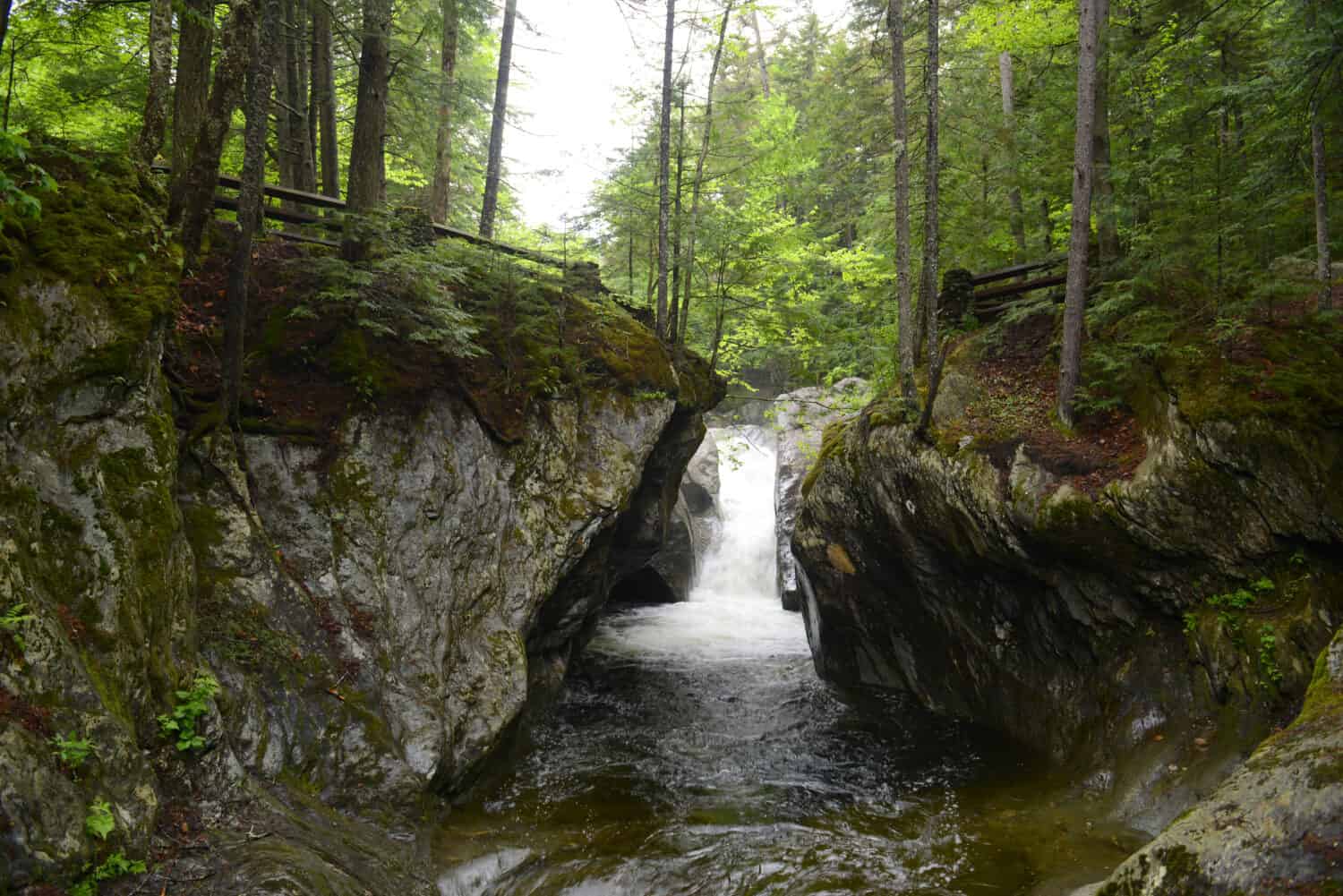
Green Mountain National Forest is the largest forest in Vermont.
©Wangkun Jia/Shutterstock.com

Things To Do in the Largest Forest in Vermont
You won’t get bored while visiting Green Mountain National Forest. There are so many things to do and see from camping to swimming. You can also visit this lovely national forest during all seasons. In the summer, it’s a perfect way to beat the heat, and during fall, you can admire the leaves changing color.
One of the most popular places to visit in Green Mountain National Forest is Texas Falls on the Hancock Branch. You can view this beautiful waterfall while hiking the Texas Falls Nature Trail. Texas Falls is jaw-dropping, but swimming isn’t allowed. Although this waterfall isn’t the tallest, it’s still a wonderful hidden gem.
Apart from the waterfall, you can also visit ponds and rivers to fish. For example, Greendale Brook on Forest Road 18 is filled with brook trout. You can also head to Grout Pond on Forest Road 262 for smallmouth bass, sunfish, and chain pickerel.
If you don’t want to get out of the car for your next adventure at Green Mountain National Forest, you can also take a scenic drive through Molly Stark Scenic Byway. It’s 48 miles long and takes about two hours to complete.

Texas Falls is a popular destination in Green Mountain National Forest.
©Wangkun Jia/Shutterstock.com
Animals in Green Mountain National Forest
The Green Mountain National Forest hosts many animals, which you may encounter while visiting. Some animals are large, like black bears and moose, while others are small, including multiple salamander species. Continue reading to learn more about some animals that call Green Mountain National Forest home.
Snowshoe Hare
The first animal on our list of animals you may encounter while visiting the largest forest in Vermont is the snowshoe hare. It’s sometimes also called the snowshoe rabbit. Snowshoe hares are North American rabbits with large hind legs. These lovely animals are mainly found up North. Sadly, they are locally extinct in some states including Ohio, Tennessee, and New Jersey.
Snowshoe hares have brown fur in the summer, but it changes to white during winter. This color change helps them hide from predators against snowfall. One of their main predators is the Canadian lynx.
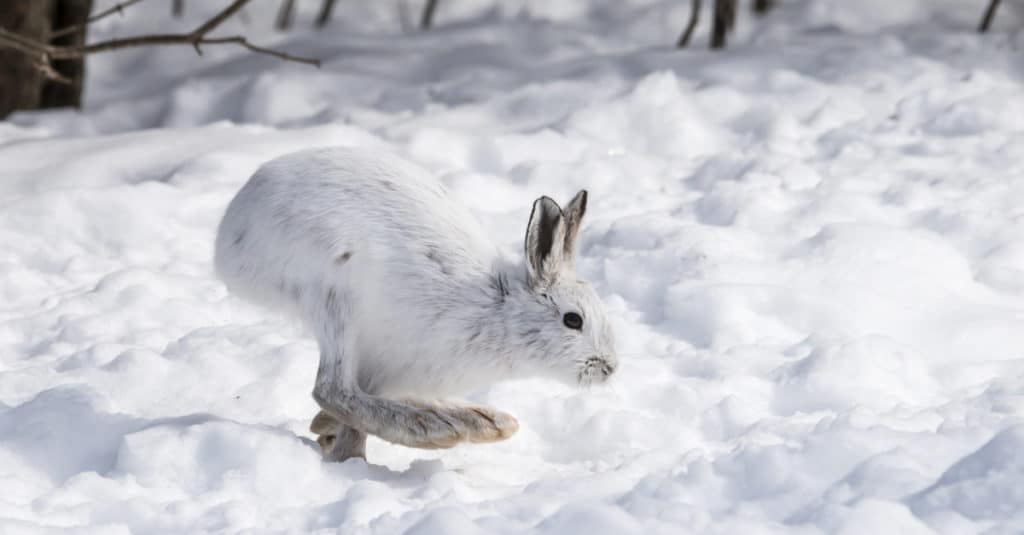
During winter snowshoe hares have white coats.
©FotoRequest/Shutterstock.com
Gray Fox
The next animal on our list is the gray fox. They are found throughout North, Central, and South America. Interestingly, this animal was previously the most common fox in the eastern United States, however, the red fox is now more common. Gray foxes are about 29 to 44 inches long. Although uncommon, gray foxes can weigh up to 20 pounds. Gray foxes are omnivores. They eat deer mice, eastern cottontails, beetles, moths, nuts, and fruits.

Gray foxes are found throughout North, South, and Central America.
©sunsinger/Shutterstock.com
Spotted Salamander
Not all animals inhabiting the largest forest in Vermont are large. For example, you can also encounter the spotted salamander, which only reaches about 5.9 to 9.8 inches long. Spotted salamanders are black, blue-green, or dark brown mole salamanders with yellowish-orange spots. If you’ve never seen a spotted salamander before, it’s likely because they spend most of their time underground. They are more common after rain. Spotted salamanders have many predators like turtles, snakes, and raccoons.
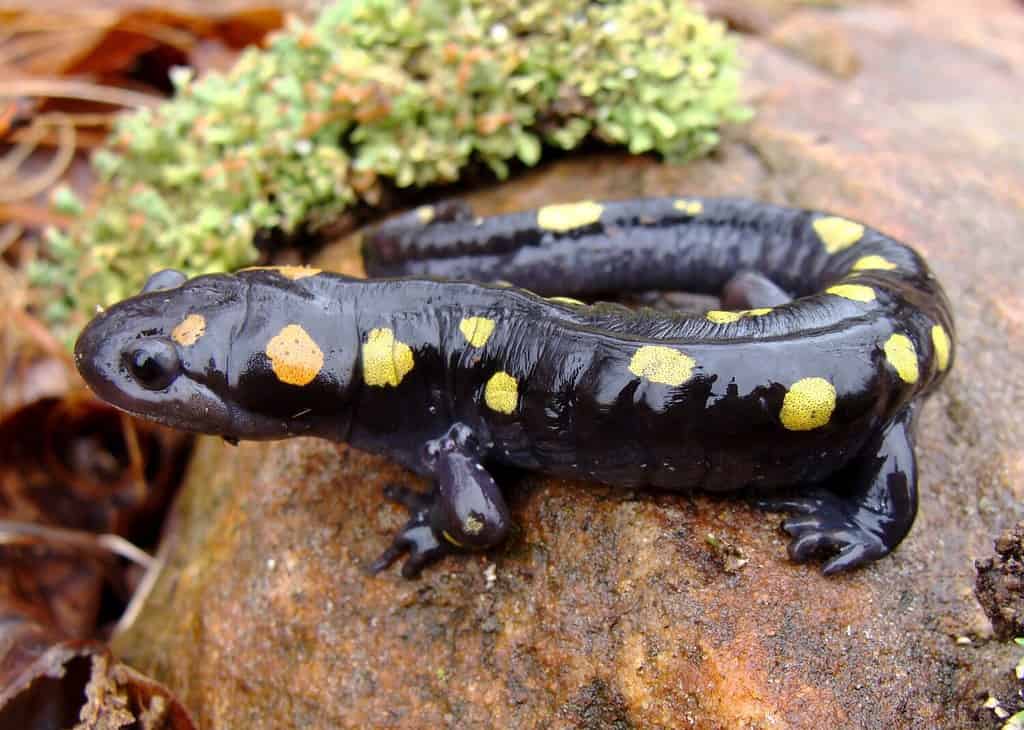
Spotted salamanders are about 5.9 to 9.8 inches long.
©Matt Jeppson/Shutterstock.com
Northern Saw-whet Owl
Bird watchers will love discovering many species in Green Mountain National Forest. One bird species you may encounter is the northern saw-whet owl. They are small owls with large eyes living in thick forests with a cover that they use to hide from predators. Northern saw-whet owls are about 6.7 to 8.7 inches long and weigh 2.8 ounces. They are migratory birds that live throughout North America.
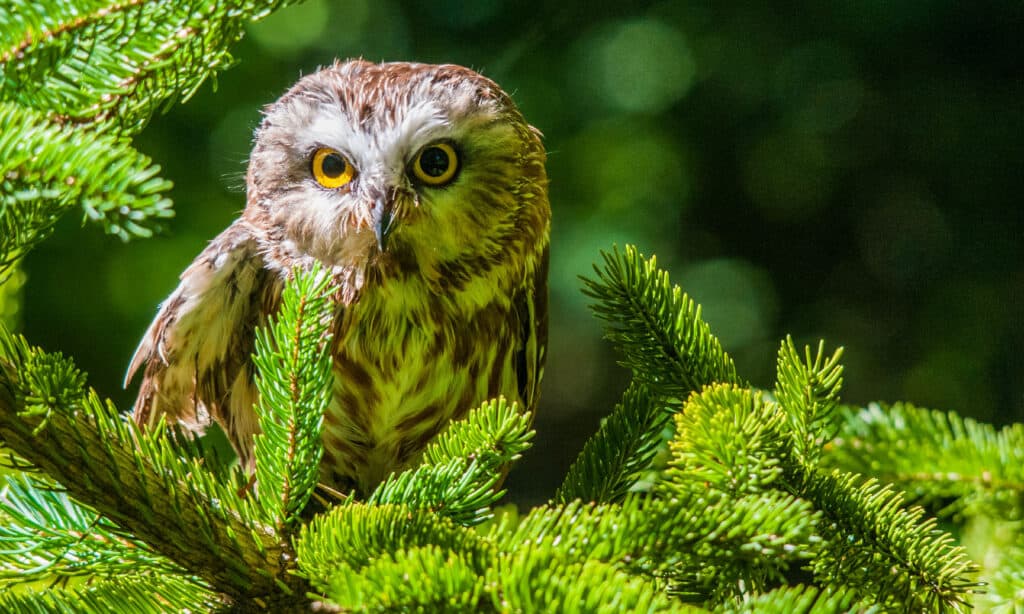
Many northern saw-whet owls live in the Green Mountain National Forest.
©iStock.com/bookguy
Chestnut-sized Warbler
The last animal on our list is the chestnut-sized warbler. They are common small birds with beautiful plumage. Chestnut-sized warblers are migratory. They mainly winter in Central America as far south as Ecuador. These birds breed in Vermont. Chestnut-sized warblers are about 3.9 to 5.5 inches long and weigh less than half an ounce. These lovely birds sing many songs. To attract mates they call an accented song.
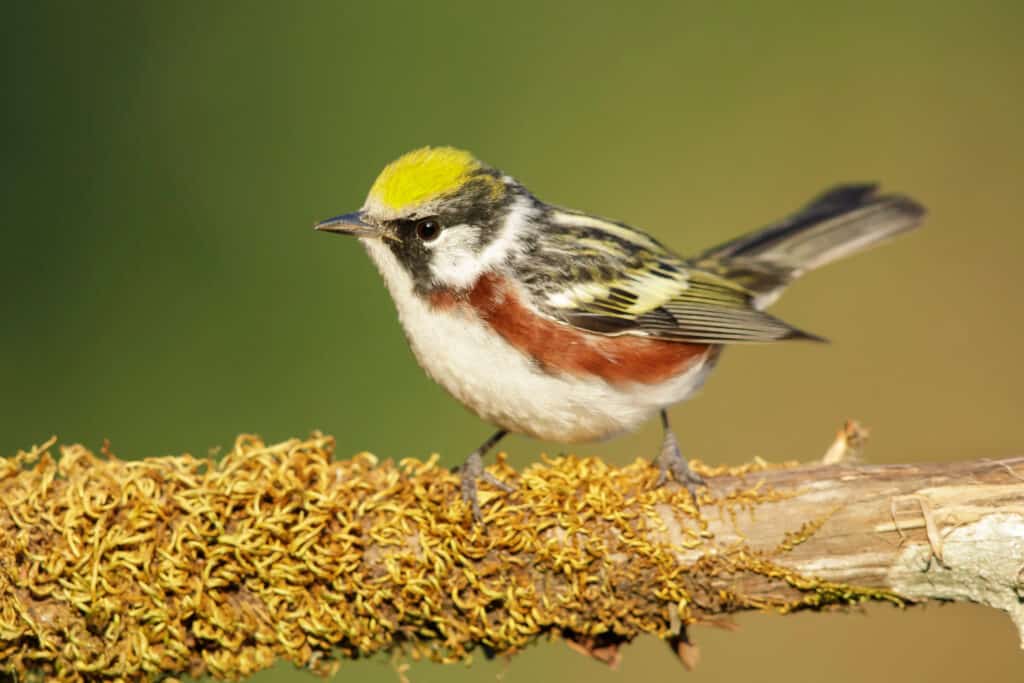
Chestnut warblers have chestnut sides, yellow crowns, and black face markings.
©Agami Photo Agency/Shutterstock.com
Where is Green Mountain National Forest Located on a Map?
Nestled in scenic Vermont, the Green Mountain National Forest is home to a rich mix of trees that reflect the New England/Acadian forest region. This forest is a habitat for various animals, such as beavers, moose, coyotes, black bears, white-tailed deer, wild turkeys, and ruffed grouse.
Here it is on a map:
The photo featured at the top of this post is © Ethan Quin/Shutterstock.com
Thank you for reading! Have some feedback for us? Contact the AZ Animals editorial team.






